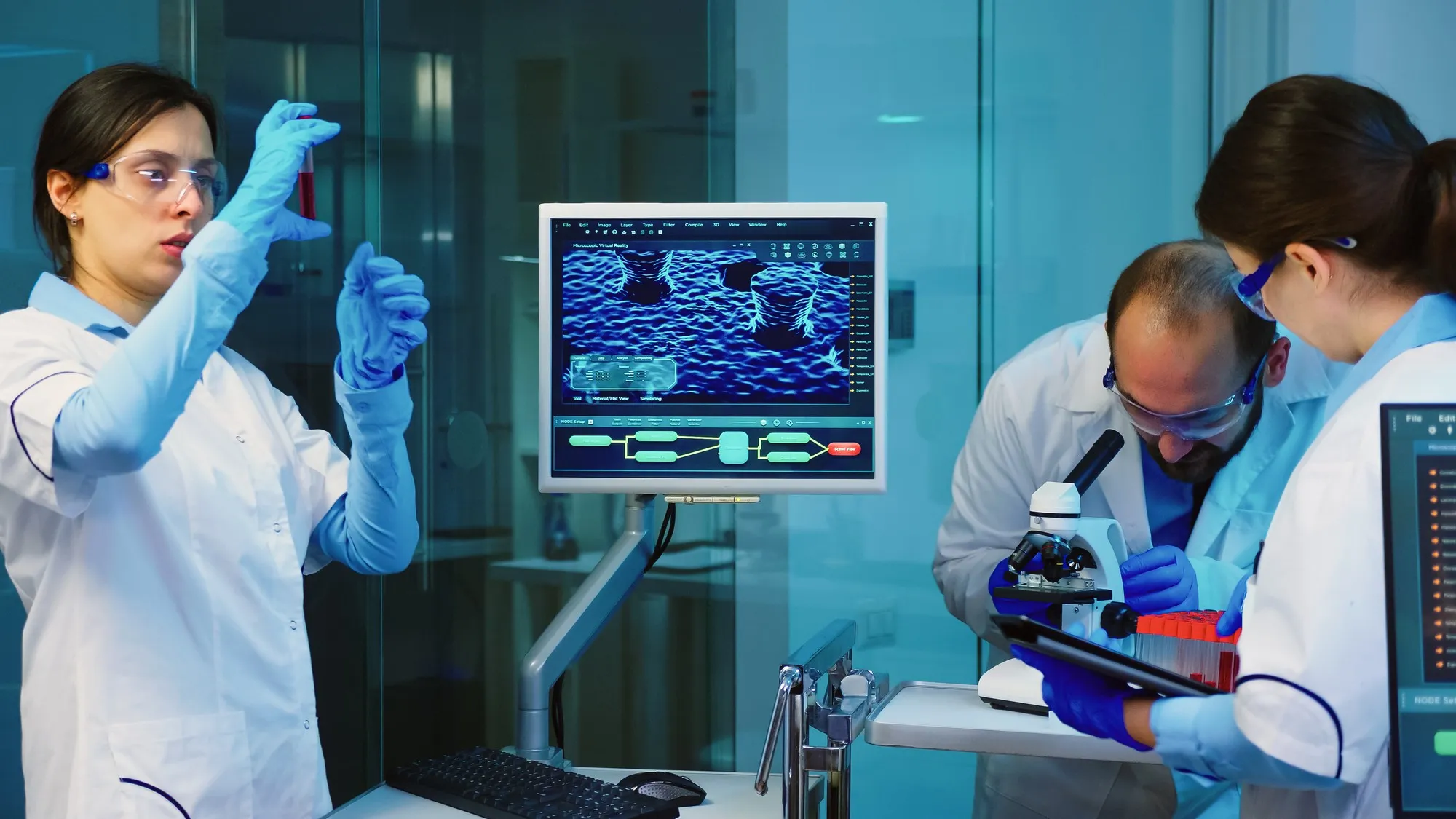Keywords
1. β-Cyclodextrin-Ferrocenylmethanol Electrode
2. Serum Creatinine Biosensor
3. Screen-printed Electrochemical Sensing
4. Ferrocenemethanol Creatinine Detection
5. Advanced Analytical Techniques in Medicine
A new dawn has arisen in the realm of analytical sciences with the recent pioneering of a sensitive detection method for serum creatinine based on the innovative use of a β-Cyclodextrin-Ferrocenylmethanol (β-CD-Fc-OH) modified screen-printed electrode, as published in “Analytical Sciences: The International Journal of the Japan Society for Analytical Chemistry”. This novel bioanalytical technique is set to revolutionize the accuracy and responsiveness of creatinine level measurement in serum, a critical marker for kidney health and function. In the world of medical diagnostics, this represents a significant breakthrough, as accurate and timely assessment of creatinine levels plays an essential role in detecting renal impairments at an early stage.
DOI Reference:
10.2116/analsci.19P015
The groundbreaking research spearheaded by an international team led by Xinmin Hu and his colleagues (2019) from the Third Xiangya Hospital of Central South University, Changsha Central Hospital, The First Affiliated Hospital of Zhengzhou University, and Hunan Cancer Hospital, has been published in the 35th volume on August 10th, 2019, in the reputed Analytical Sciences Journal.
The methodology deploys a host-guest supramolecular interaction complex formed by the inclusion of Ferrocenylmethanol (Fc-OH) within β-Cyclodextrin (β-CD), a cyclic oligosaccharide renowned for its ability to encapsulate molecules within its hydrophobic cavity. Due to the electrochemical conversion of Fc-OH to Fc +, β-CD dissociates from the β-CD-Fc-OH complex, thereby allowing for the sensitive detection of serum creatinine.
This novel approach exceeds the performance of traditional electrochemical and optical methods in terms of sensitivity and selectivity by leveraging the distinct interactions between β-CD and Fc-OH. The clinical implications are profound; this advancement portends the capacity to provide expeditious and precise serum creatinine results. It moreover furnishes a cost-effective alternative without the requirement for bulky and expensive laboratory instruments, a substantial benefit for under-resourced settings.
At the core of this technology lies the screen-printed electrode, a device that has earned its reputation for robustness, disposability, and potential for mass fabrication. The versatility of these electrodes makes them an ideal platform for point-of-care testing. When amalgamated with the β-CD-Fc-OH complex, these electrodes provide an optimal surface for the stable attachment of the sensing molecules while allowing a quick response to creatinine levels in serum.
The peer-reviewed study expands upon earlier works and overcomes the practical challenges encountered in serum creatinine detection. The method’s ingenuity is demonstrated through its successful application in a practical laboratory environment, yielding results that stand in agreement with conventional and widely accepted creatinine assessment methods, such as Jaffe’s kinetic method and enzymatic assays.
The instrumentation of the present sensor system harbors promise for further development into multiplexed or portable formats. This portends the realization of real-time, at-home monitoring of kidney function for patients with chronic kidney disease, thereby proving instrumental in consistent disease management and potentially prolonging patient’s quality of life.
References
Hu, Xinmin, et al. “Sensitive Detection of Serum Creatinine Based on β-Cyclodextrin-Ferrocenylmethanol Modified Screen-printed Electrode.” Analytical Sciences: The International Journal of the Japan Society for Analytical Chemistry 35.8 (2019): 903-909. DOI: 10.2116/analsci.19P015
1. Qiu, H., et al. “Electrochemical sensors and biosensors based on less aggregated graphene.” Biosensors and Bioelectronics 89 (2017): 167-186.
2. Labuda, J., et al. “Electrochemical biosensors – principles and applications.” Journal of Applied Biomedicine 7.2 (2009): 58-70.
3. Pundir, C. S., & Deswal, R. “An electrochemical method for estimation of blood creatinine.” Biochemistry and Analytical Biochemistry 1.113 (2012).
4. Turner, A. P. F. “Bio-sensing using screen-printed electrochemical sensors.” Analytical and Bioanalytical Chemistry 377.3 (2003): 446-451.
5. Hart, J. P., et al. “Recent developments in the design and application of screen-printed electrochemical sensors for biomedical, environmental and industrial analyses.” Microchimica Acta 152.3 (2006): 177-191.
The latest advancement in the detection of serum creatinine delineates yet another leap forward in the bioanalytical domain. The integration of β-cyclodextrin with ferrocenylmethanol onto a user-friendly screen-printed electrode paves the way for a new generation of clinical diagnostic tools. With a robust and simple application process, the implications for patient care and medical research are vast. The convenient and effective monitoring of renal health stands to benefit greatly from this novel scientific advancement, potentially improving outcomes and quality of life for millions of patients worldwide.
By both diversifying the means by which we can gather crucial health data and simplifying its procurement, Xinmin Hu and the team’s research translates into enhanced analytical capabilities and an elevated standard of care. The broader adoption of such technologies holds the promise of shifting the landscape of healthcare, particularly in the domains of disease prevention, early detection, and individualized medicine. The additional merit of their study is a testament to the ongoing evolution and the ever-increasing potency of analytical sciences in modern healthcare and diagnostics.
